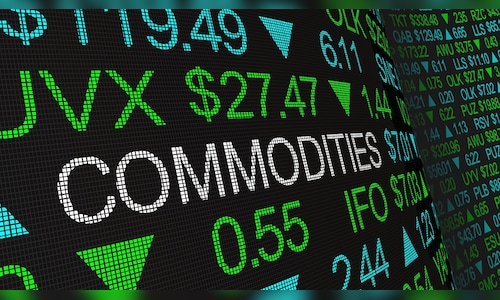
US President-elect Donald Trump has announced plans to impose an additional 10% tariff on Chinese goods and a 25% tariff on all imports from Mexico and Canada. These measures are expected to further strengthen the US dollar, increasing pressure on commodity markets.
Other factors influencing the market include geopolitical tensions from the ongoing Ukraine-Russia conflict and the Israel-Hezbollah situation, coupled with anticipation of a potential Fed rate cut in December.
Silver, which had been on a bullish run for several months, has experienced a sharp 10% decline over the past month following the US elections. Meanwhile, global uncertainties have also significantly impacted agricultural commodity markets.
To delve deeper into these developments, CNBC-TV18 interviewed Michael DiRienzo, President & CEO of The Silver Institute, and Sumit Gupta, CEO of Asia Business at McDonald Pelz.
Below are the excerpts of the discussion.
Q: What does Trump coming as the US President mean for various commodities, especially silver? We have seen commodity prices very, very volatile. How are you reading into this?
DiRienzo: It’s anybody’s guess how Donald Trump’s victory is going to affect the commodities complex. When he was elected in 2016, it affected it to a certain degree, but the dollar is important as it is the currency that is used by so many nations across the world. And if it continues to rise as it has since his election, it could have an impact on precious metal prices including silver.
It’s not good news when you hear the word tariff. And you look at the high number he wants to put on China. Will that affect Chinese industrial demand? Potentially, that’s a big part of the silver equation these days. It’s an investment metal and it’s an industrial metal. And right now we’ll just have to wait and see how this affects silver.
Q: We do understand that all of silver in the global markets and 60% of that use really comes in from the industrial markets right now. So when you look at the global markets, how much would you say China comprises of when it comes to industrial demand for silver.
DiRienzo: We just sort of looked at these numbers recently. We put out a press release two weeks ago looking at the interim prices and so forth of the complex since our world silver survey in April. We think that China is going to be the leader again this year with respect to industrial demand. If you just look at their electrical and electronics component alone that’s expected to hit a new high of about 210 million ounces which is roughly 6,600 tonnes. And to put that in perspective just two years ago their demand was about 3,900 tonnes with respect to just that one category.
We do think globally however, that certain components are going to rise over the year.
Q: What is your sense on the Indian demand now going forward because here as well while the investment demand continues strong. If silver ETFs is anything to go by we’ve seen very strong AUMs come into that one. How would you look at the Indian investment demand vis-a-vis the global investment demand in silver?
DiRienzo: In terms of global investment demand, India is really keeping us in the game right now because we are projecting about a 15% decrease this year in terms of physical investment. And we’re talking coins and bars. But on exchange-traded products, we’re looking at our first annual inflows into these products this year, the first in three years. And that has come along with the expectation of further Fed rate cuts. There have been some periods of dollar weakness. And the falling yields have benefited silver investment. At the end of October this year, we’re looking at global holdings in ETPs to be up about 8% from year-end 2023. And India is really leading the way with respect to this market.
We have the SLV, we have the PSLV. But let’s face it, India’s ETP market is relatively new, and there seems to be robust demand coming from your country.
Q: You spoke about the US Fed rate cut expectations, and that probability has continued to decline for the month of December. But as we get into 2025, what is your sense? Because the size and the speed of these rate cuts, it’s something that the markets are getting very uncertain about.
DiRienzo: I don’t know about December, and you’re right about that. I think the game has changed a bit there, but we’ll have to wait and see. But those that are paid to analyse the Fed, those that are in that market, the analysts, are still projecting at least two to three, if not more, cuts in 2025. And that will be great for the global precious metals complex. Traditionally, when the rates go lower, people are looking to get out of certain investments and go to hard assets, of which silver is one. And we’re looking forward to a very good 2025.
I mean, face it, 2024 has been great for silver. We’re up about 28% on the year. And quite frankly, the silver price has been quite resilient.
Q: So going forward then, what’s your sense on prices? Because we’ve been reading those reports suggesting $36 and $38 and even $40 an ounce in the next year or perhaps 2026. How is the Silver Institute looking at those numbers?
DiRienzo: We try to shy away from giving price projections. But when you look at a number like that, we’re very excited. That’s a great number. If you get to $36-38 next year, you’re looking at an average price probably at about $32-33 and the market really would appreciate that, obviously. The silver members, our members, would appreciate that. But quite frankly, those banks that you mentioned, not by name, that are making these projections are doing it for a reason. And the reason is that silver continues to be a valuable resource. And its future is extraordinarily bright with the green revolution.
Q: China does matter when you talk about commodities because either they are the major producers or consumers or importers of various commodities. Now with all these tariffs coming in on China how are you reading commodities and which ones would you keep an eye on?
Gupta: Trump, tariffs and trade, these are the three components which are going to keep international markets very volatile in years to come. Because of the possible imposition of the tariffs the global trade flows are set to change and it is going to have a profound impact on India. Since China which is a major producer and consumer of the commodities and which is at the center of the trade war, we are going to witness for sure extremely volatile commodities.
But everything aside, we expect that because of this trade war situation where potentially Trump is talking about tariff on import of Chinese products. The one weapon which China has used last time was to put tariff on soybeans out of US dominantly which impacts the heart and soul of the American farmer which is the key Republican voting area. But personally I believe those things are already accounted for because global production is not going to change. The only thing which is going to change is trade flows. Today, for example, US is exporting beans to China and other countries and potentially with these tariffs, Brazil and Argentina will start exporting beans to China and US will export beans to the non-Chinese destination. It will have a profound effect on the trade flows and especially veg oil imports into India. But we are going to live through very interesting times, as you have mentioned, during the duration of Trump, tariffs and trade wars.
Q: Also the other factor to look for is the currency markets, isn’t it? Because with the strength in dollar index, we’ve seen other currencies kind of depreciate, including the Indian rupee. How are these currencies going to impact the kind of global trade that India does? Because we import pulses, and we export a lot of things as well. Rice has been a latest addition as well. How would you look at currencies vis-a-vis various agriculture commodities?
Gupta: We expect Indian rupee to stay weak because dollar will gain more strength with these tariffs. Going forward the interest rates in the US will go down and if Indian rupee depreciates, then it’s going to be inflationary for the products that we are going to import that are products like pulses, vegetable oils and other products.
From the export point of view also it is also inflationary. If our rupee depreciates then the rice prices in the Indian market goes up. So Indian inflation for sure because of this trade situation is going to go up. It is going to impact food prices adversely. But I will still say India is largely a domestic market and if our dream of Viksit Bharat as we have to achieve by 2047 you are going to see us getting integrated in international market a lot more through proteins, through vegetable oil, pulses and potentially grains also. So I believe we are going to live through turbulent time. Currency is going to be more volatile than what we have seen in last many years. But Indian economic fundamentals are very good. We don’t expect Indian currency to depreciate in a big way. But it is going to be a lot more volatile than it was in last four to five years.
Watch the video for more



